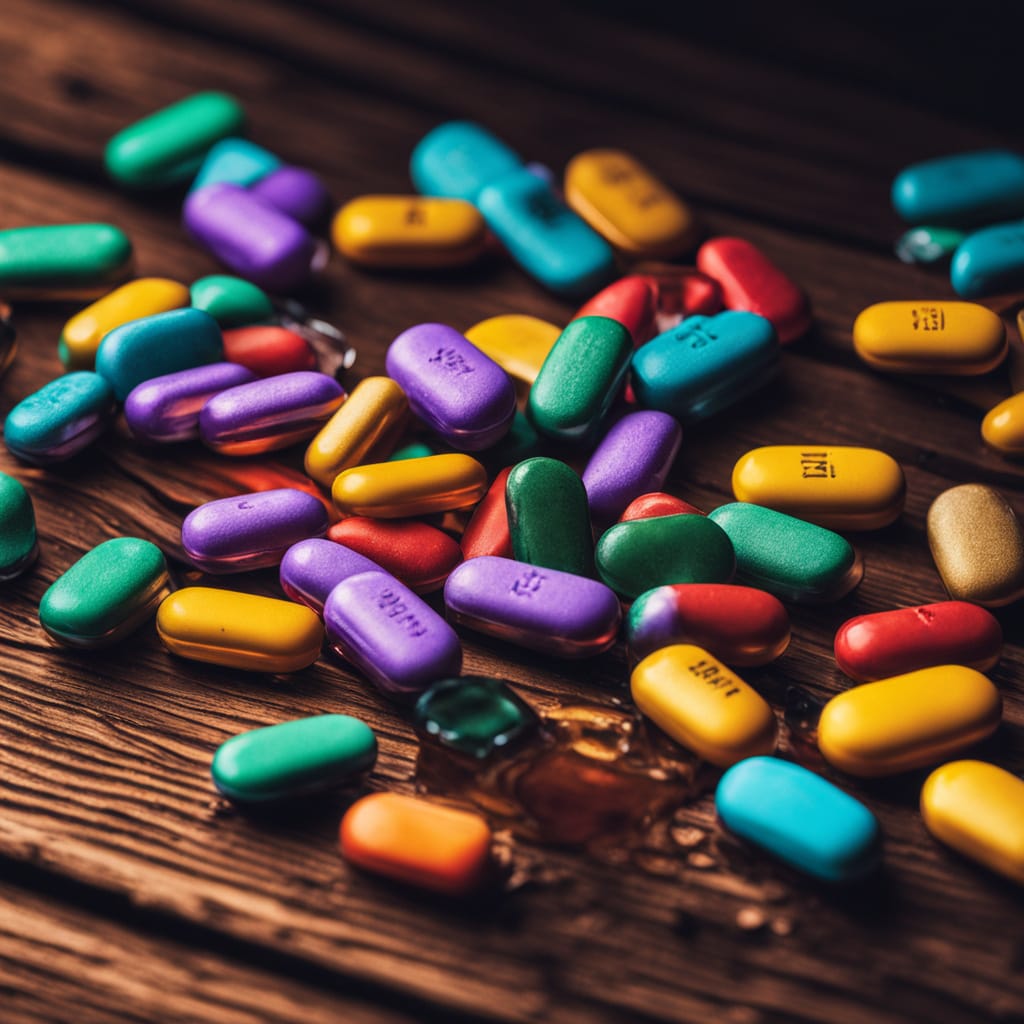Illegal Drugs in Sports
Illegal Drugs in Sports: A Global Dilemma

The use of illegal drugs in sports has long been a controversial and pervasive issue. Illegal drugs in sports not only threaten the integrity of athletic competitions but also undermine the health and well-being of athletes. Throughout history, various substances have been misused to enhance performance, casting a shadow over sports. In this blog post, we will explore the history of illegal drugs in sports, their global impact, and how they affect both amateur and professional athletes. We’ll also examine the different types of illegal drugs commonly used and discuss the importance of eliminating them from sports altogether. Illegal drugs in sports remain a significant concern, impacting every level of athletic participation. By understanding their history and consequences, we can work toward eradicating their presence in sports.
A Historical Perspective on Illegal Drugs in Sports
The history of illegal drugs in sports dates back several decades. In the early 20th century, athletes began using substances like amphetamines to gain an edge. By the 1960s, the use of performance-enhancing drugs (PEDs) became more widespread, particularly in Olympic sports. Anabolic steroids, stimulants, and other drugs were readily available, often with little regulation. The 1976 Summer Olympics in Montreal became a turning point as more attention was drawn to the issue. Athletes from various countries were accused of using illegal drugs to boost performance.
The 1980s and 1990s witnessed numerous doping scandals in professional sports, most notably in cycling, where athletes used erythropoietin (EPO) to enhance endurance. The creation of the World Anti-Doping Agency (WADA) in 1999 marked a major step forward in regulating the use of illegal drugs in sports. WADA aimed to create a level playing field by developing stringent testing protocols and banning certain substances. Despite these efforts, illegal drugs in sports continued to be a persistent issue.
The Global Problem of Illegal Drugs in Sports
Illegal drugs in sports have become a global concern. Countries around the world grapple with the challenge of combating doping in their athletic programs. In Russia, for example, a state-sponsored doping scandal was uncovered in 2016, resulting in widespread sanctions for the nation’s athletes. This scandal shook the sports world, leading to increased scrutiny of drug use in sports across the globe.
In the United States, drug use in sports has also been an issue, especially in major leagues such as the NFL, NBA, and MLB. Athletes have been caught using steroids, human growth hormone (HGH), and other banned substances to improve their performance. Meanwhile, in countries like Kenya and Ethiopia, doping has become an issue in endurance sports like long-distance running. This shows that illegal drugs in sports are not confined to any one region or sport but are a global problem that needs a collective effort to resolve.
One of the significant challenges in eliminating illegal drugs in sports is the variation in regulations and enforcement across different countries. Some nations have more stringent testing protocols and anti-doping agencies, while others lack the resources to effectively combat the problem. The uneven playing field created by inconsistent regulations only fuels the issue, allowing athletes in some regions to exploit lax enforcement.
Impact on Amateur Sports and Youth
The use of illegal drugs in sports doesn’t only affect professional athletes. Amateur sports, particularly at the high school and college levels, are also impacted. Many young athletes feel immense pressure to perform at high levels, leading some to turn to performance-enhancing drugs to meet expectations. This pressure can be especially intense in competitive environments like school sports programs, where scholarships and future opportunities are at stake.
When young athletes see professional players using illegal drugs to gain an advantage, they may be tempted to do the same. The normalization of doping among professionals can create a dangerous cycle, with youth athletes believing that drug use is a necessary part of achieving success. Schools and sports organizations have attempted to curb this trend by implementing educational programs and random drug testing. However, these measures are not always enough to deter young athletes from turning to banned substances.
The health risks for youth athletes using illegal drugs are substantial. Steroids, for example, can lead to heart problems, liver damage, and mood disorders, while stimulants can increase the risk of strokes and heart attacks. The long-term consequences of drug use at a young age can be devastating, affecting both physical and mental health.
Parents, coaches, and schools play a critical role in preventing the use of illegal drugs in amateur sports. By fostering a culture of fair play and emphasizing the dangers of doping, they can help steer young athletes away from illegal substances.
Impact on Professional Sports
The impact of illegal drugs in sports is particularly noticeable in professional leagues. Athletes who use performance-enhancing drugs gain an unfair advantage over their competition. This not only undermines the integrity of the sport but also erodes trust among fans, players, and stakeholders. When athletes test positive for banned substances, it casts doubt on their achievements and often leads to tarnished reputations.
Several high-profile doping scandals have rocked the professional sports world. In cycling, Lance Armstrong’s admission to using illegal drugs throughout his career shocked the world. His seven Tour de France titles were stripped, and his legacy as one of the greatest cyclists in history was shattered. In baseball, players like Barry Bonds and Alex Rodriguez faced similar fallout after being linked to steroid use.
The financial implications of illegal drugs in sports are also significant. Sponsors and advertisers invest heavily in athletes and teams. When doping scandals emerge, companies often distance themselves from the athletes involved to avoid negative publicity. This can lead to a loss of endorsement deals, further tarnishing the athlete’s career.
Leagues have responded by implementing strict drug-testing policies. The NFL, for example, has a comprehensive testing program that includes year-round testing for PEDs and recreational drugs. The MLB has also taken steps to address the issue by banning certain substances and suspending players who test positive. Despite these measures, the allure of enhanced performance continues to tempt some athletes.
Types of Illegal Drugs Used in Sports
There are various types of illegal drugs used in sports, each with different effects on the body. Some of the most common include:
- Anabolic Steroids: These are synthetic versions of testosterone that promote muscle growth and increase strength. Athletes use them to enhance their physical performance and recover more quickly from injuries. However, the side effects include liver damage, heart disease, and hormonal imbalances.
- Human Growth Hormone (HGH): HGH is naturally produced by the body, but some athletes use synthetic HGH to promote muscle growth and speed up recovery. Like steroids, HGH can have serious side effects, including joint pain, swelling, and an increased risk of diabetes.
- Erythropoietin (EPO): This hormone boosts the production of red blood cells, allowing the body to carry more oxygen and improve endurance. EPO is commonly used in endurance sports like cycling and long-distance running. However, its use can increase the risk of blood clots and strokes.
- Stimulants: Drugs like amphetamines and cocaine are used by athletes to increase alertness, focus, and energy levels. While they may provide short-term benefits, stimulants can lead to addiction, heart problems, and anxiety.
- Diuretics: These drugs help athletes lose water weight quickly, which can be advantageous in sports with strict weight categories, like boxing or wrestling. Diuretics can also be used to mask the presence of other illegal drugs in drug tests. However, they can cause dehydration, kidney damage, and electrolyte imbalances.
The Significance of Eliminating Illegal Drugs in Sports
Eliminating illegal drugs in sports is essential to preserving the integrity of athletic competition. Fair play is one of the fundamental principles of sports, and doping undermines this value. When athletes use illegal drugs, they not only cheat their opponents but also disrespect the hard work and dedication of others who compete cleanly.
Moreover, eliminating illegal drugs from sports protects the health of athletes. Many of the substances used for doping have serious, long-term health consequences. By enforcing strict anti-doping measures, sports organizations can help ensure that athletes do not jeopardize their well-being for the sake of performance.
In addition, addressing illegal drugs in sports sets a positive example for youth athletes. When professional sports leagues take a firm stance against doping, it sends a message to younger generations that success should be achieved through hard work, talent, and perseverance—not through shortcuts or dangerous substances.
Conclusion
Illegal drugs in sports have been a long standing issue that continues to affect athletes at every level. From the early days of performance-enhancing drugs to modern doping scandals, the problem remains a global challenge. Amateur athletes, particularly young people, are especially vulnerable to the pressures of using illegal substances. Meanwhile, professional sports are tarnished by doping scandals that damage the reputation of both athletes and the sports themselves.
Despite the challenges, progress has been made in the fight against illegal drugs in sports. Anti-doping organizations, stricter regulations, and comprehensive testing programs have helped to curb the issue. However, there is still much work to be done. The significance of eliminating illegal drugs from sports cannot be overstated. By preserving the integrity of competition and protecting the health of athletes, we can ensure that sports remain a true test of skill, determination, and fair play.






